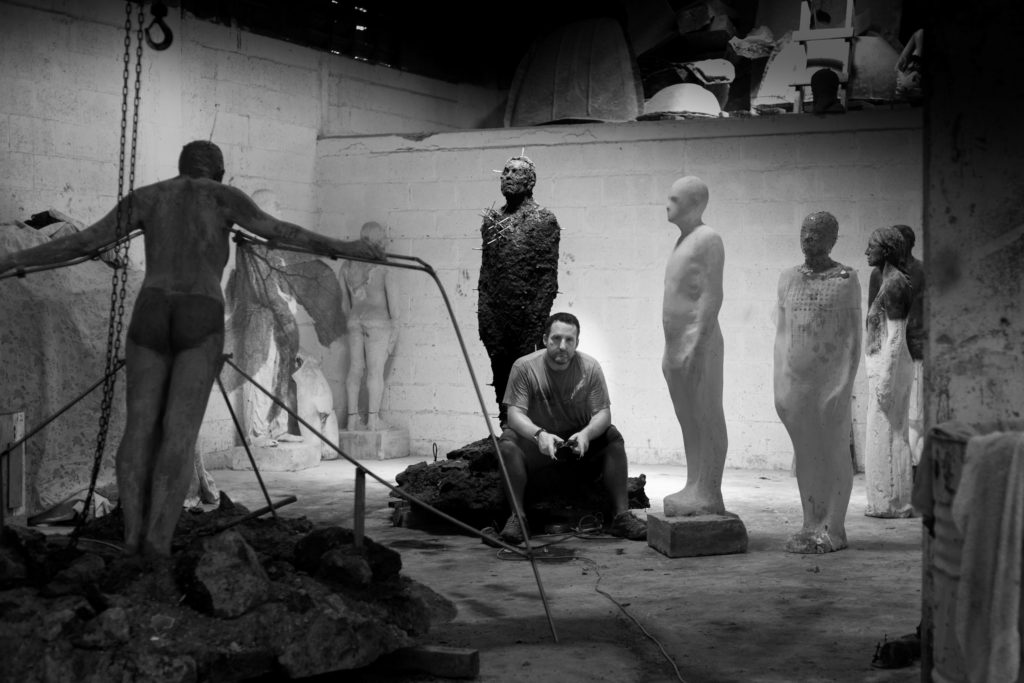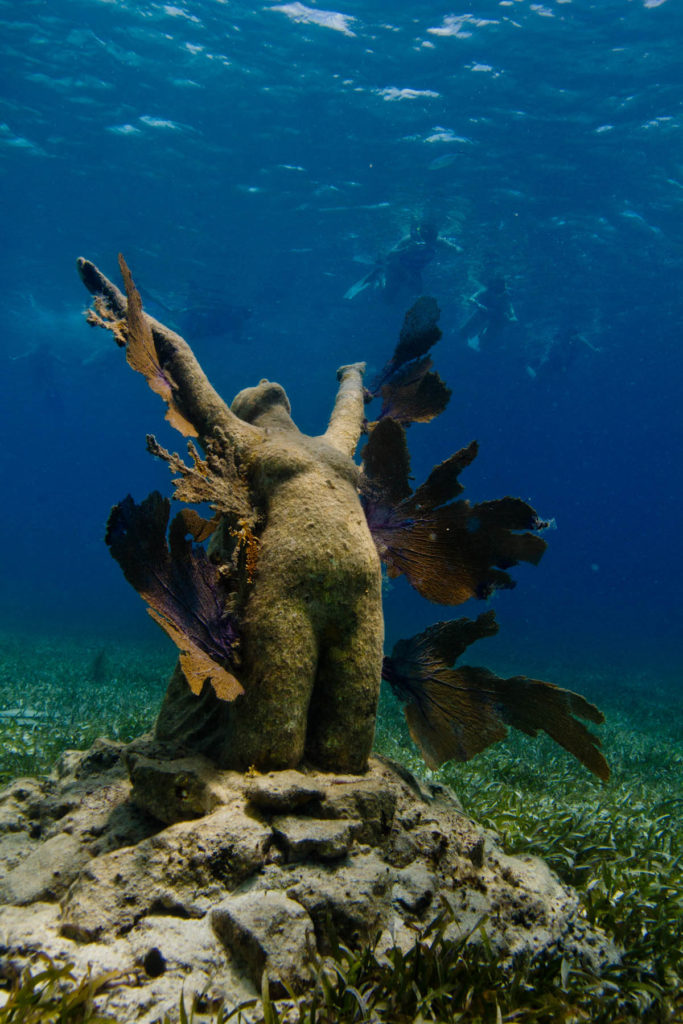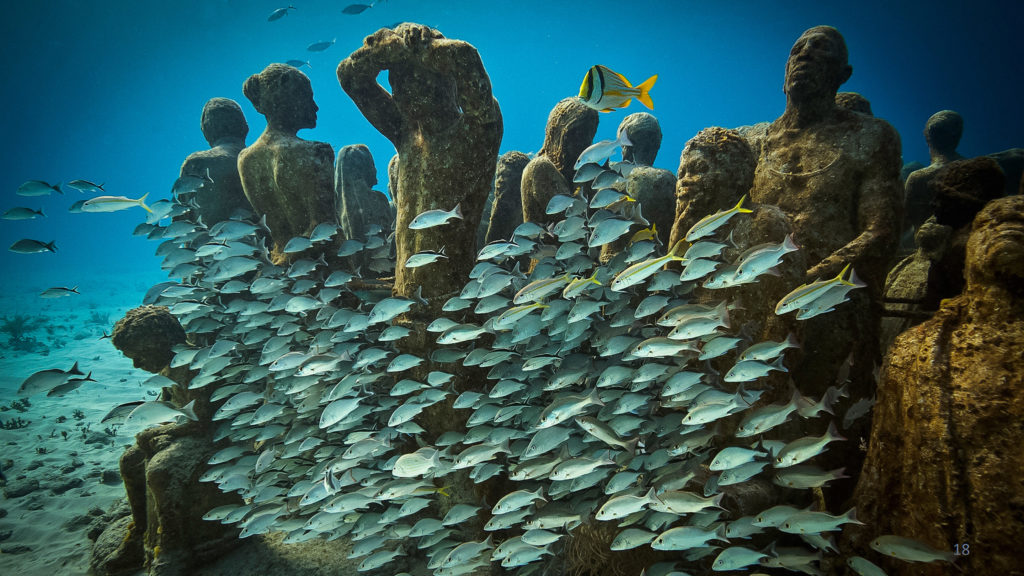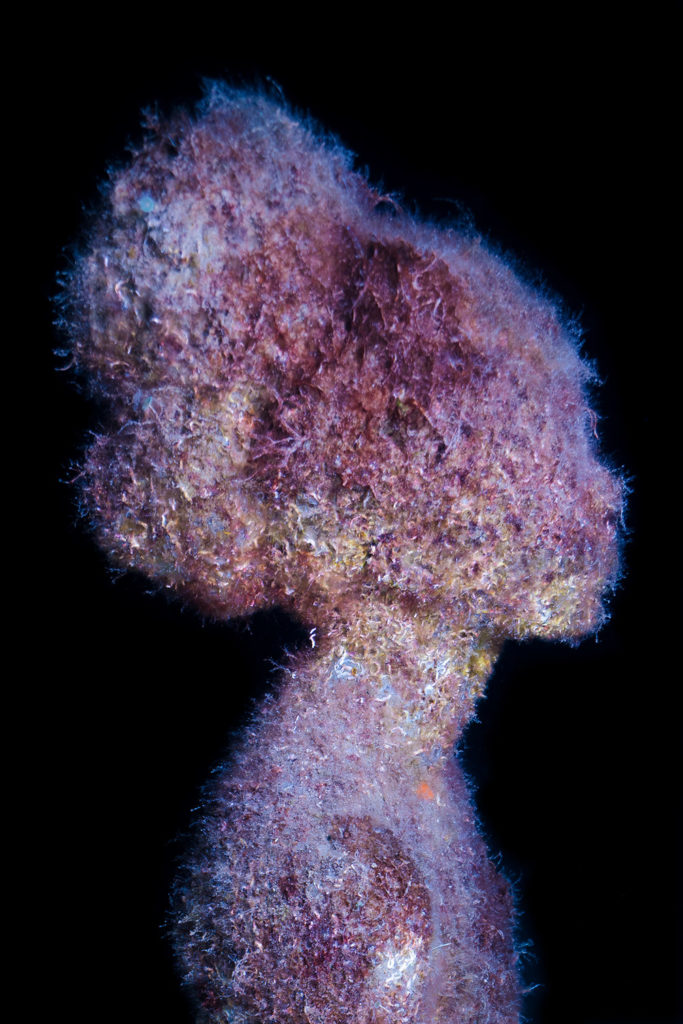Cupid and Psyche: Love Story Through Sculpture
Cupid and Psyche, mythological characters immortalized in Metamorphoses by Apuleius, have been inspiring artists through the centuries. Sculptors...
Valeria Kumekina 14 June 2024
22 March 2023 min Read
In 2006, British artist Jason deCaires Taylor installed the first undersea sculpture park in the Caribbean. Since that time he has created installations in several other sites including Cancun in Mexico, the banks of the Thames in London, and the waters of Canary Island Lanzarote. Taylor’s unique installations are a culmination of his skills and experiences as a sculptor, conservationist, and scuba diver. He is a key contributor to the eco-art movement.

The sculptures are made from a special pH-neutral cement with a texture that encourages the growth of coral and the habitation of underwater creatures. The corals, sponges, fish, crustaceans, and worms live on and alter the surface of the statues – the sea claiming the works, altering and engaging with the pieces in a completely organic way.

The Raft of the Lampedusa resting on the floors off of Lanzarote is a homage to Théodore Géricault’s Raft of the Medusa (1891). It shows people “piled” in an inflatable raft. In Taylor’s words, the
work is not intended as a tribute or memorial to the many lives lost but as a stark reminder of the collective responsibility of our now global community.

Reclamation is infusing hope and phoenix-like resurrection. Purple sea fans spread and filter the water. It offers a sense of revival to the viewer and is home to the ocean life teaming on its surface.

Silent Evolution in Museo Subacuático de Arte off of Cancun, was one of the most provocative pieces – with 400 casts of locals grouped together. The scale and weight were massive. They are a key example of the awareness and conservation these parks are working to create.

DailyArt Magazine needs your support. Every contribution, however big or small, is very valuable for our future. Thanks to it, we will be able to sustain and grow the Magazine. Thank you for your help!